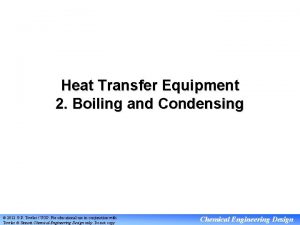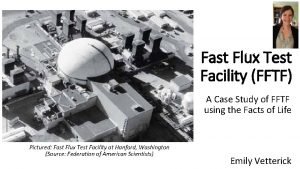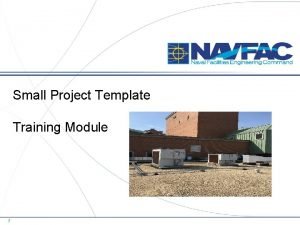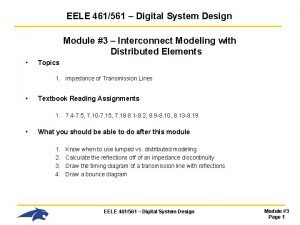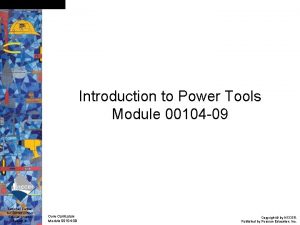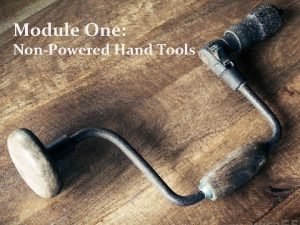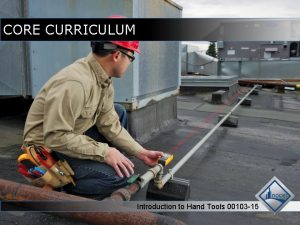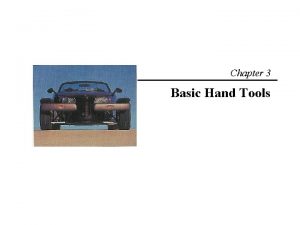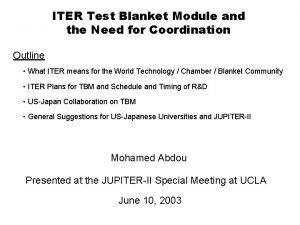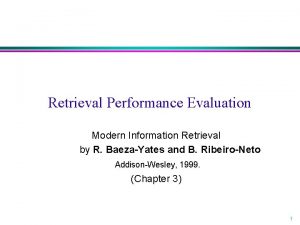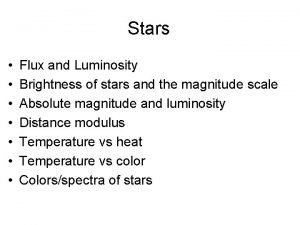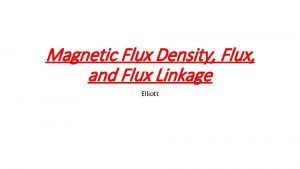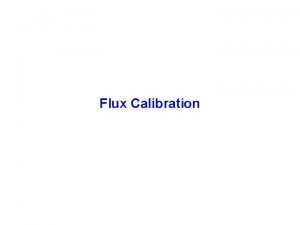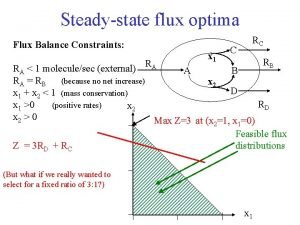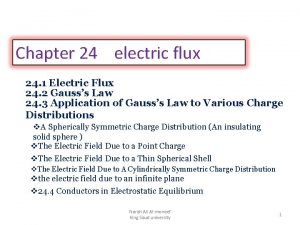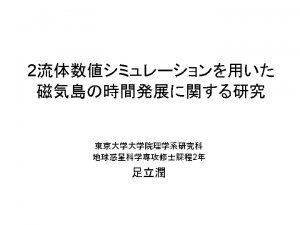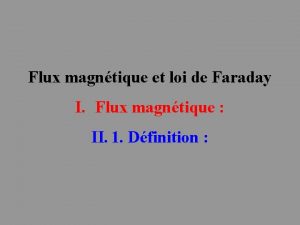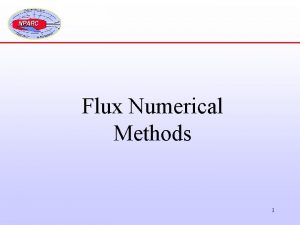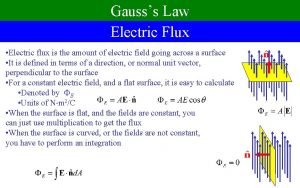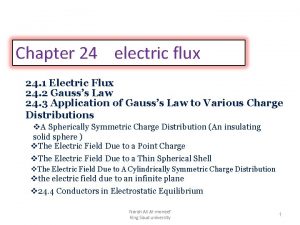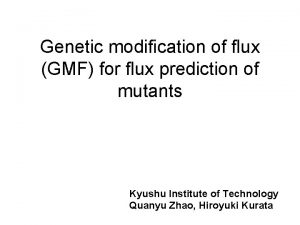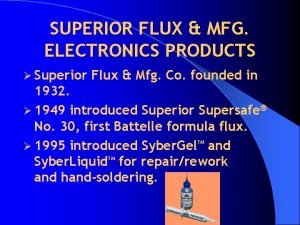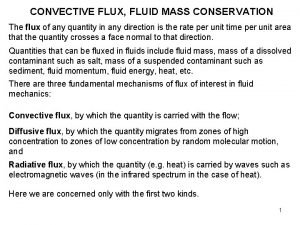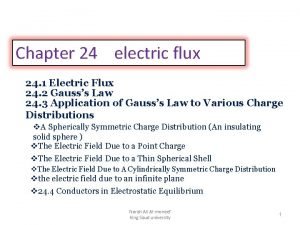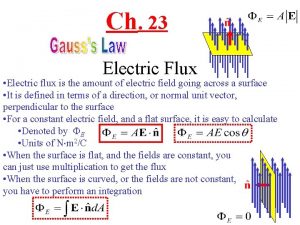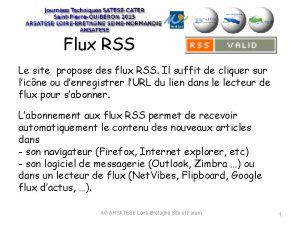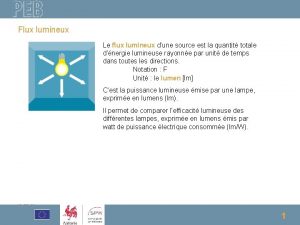Design Activity of High Flux Test Module of

















![Ceramic heater for temperature control (thermal conductivity: 18[W/m. K]) 70 15 Heater 16. 5 Ceramic heater for temperature control (thermal conductivity: 18[W/m. K]) 70 15 Heater 16. 5](https://slidetodoc.com/presentation_image/3b9c9efb8cd006f40bafb7981c52746f/image-18.jpg)















![Heater-printed Capsule -cross-sectional view. Printed Heaters Multi-layered Ceramic Coating [mm] • Outer mounted heaters Heater-printed Capsule -cross-sectional view. Printed Heaters Multi-layered Ceramic Coating [mm] • Outer mounted heaters](https://slidetodoc.com/presentation_image/3b9c9efb8cd006f40bafb7981c52746f/image-34.jpg)

- Slides: 35

Design Activity of High Flux Test Module of IFMIF in Kyushu Univ. A. Shimizu@Kyushu Univ.

Outline of IFMIF Accelerator facilities Target facilities l. Provide 40 Me. V, 250 m. A deuteron beam by 2 accelerator modules. l. Irradiate D+ beams on Li target with beam footprint of 20 cm(W) x 5 cm(H) l. Remove up to 10 MW beam l. Supply 500 cm 3 irradiation volume power by Lithium flow of with 1014 n/s・cm 2 (20 dpa per year) 20 m/s Li flow neutron flux l. Irradiation temperature: 250~ 1000℃ Deutero n beams Injecto r RFQ Test facilities Test piece Neutron irradiation DTL Heat exchanger Design & Integration Magnet pump Test Cell PIE facilities l Engineering design over the whole system of IFMIF Mission Qualification of candidate materials up to about full lifetime of anticipated use in a fusion DEMO reactor. Advanced material development for commercial reactors.

Test Cell Configuration shielding plug for high flux region for low & very low flux regions for medium flux region 2. 5 m D+ Lithium target Li quench tank

Required performance for temperature control in He-cooled high flux test module Irradiation characteristics has strong dependency on temperature. Specimens must be kept at a constant temperature (250 -1000℃) with acceptable error of less than 1%. Small irradiation volume of about 0. 5 l must be assigned to specimens as large as possible. Space for cooling channels, heaters, insulations etc. should be minimized. The temperature control for specimens in HFTM is one of the most challenging issue in

Original design of test module Rig Capsule T. C. Test Pieces Gap

Large uncertainty of temperature measurement • Large uncertainty of temperature measurement is inevitable due to gap conditions and location of thermo-couple, if the T. C. is buried in capsule. Buried location of T. C. from the capsule inner wall Estimation of uncertainty of temperature measurement u Effective gap conductance lgap varies as function of parameter f. u f means the volume fraction of occupation of gas (He) in the gap. u f =1 when the gap width is retained, but f can be change, for example, due to swelling. T. C. can not measure (estimate) the temperature of T. P. due to non -uniformity of temperature in T. P. and inherent uncertainty of measurement procedure.

Change in design & derivation of HFTM • Ultimate purpose of HFTM Temperature control for irradiated specimens for long time periods in temperature window of 250 -1000 deg. C with adequate volume for specimens. • Uncertainty of gap condition between specimens and capsules makes identification of specimen temperature very difficult. – Temperature difference of 100 K or so between actual and guessed temperature in specimens arises easily.

Features of both design • Na. K-bonding concept (EU) – Problem originated from gap condition is overcome due to high thermal conductivity of Na. K filling the gap. Other problems arise – Nak is available only under 650 deg. C. – How to fill Na. K into the gap of 0. 1 mm or so? – How to treat activated Na. K after irradiation test? • He-bonding concept (JP) – Whole temperature window up to 1000 deg. C. is feasible. – Cast-type capsule reduces the problem of gap. – Specimen temperature is guessed correctly by

EU design He-cooled HFTM with Chocolate -Plate-Shape Rig and Triple. Heater-Capsule Container with three compartments each with three rigs; Helium channels with a width of 1 mm between

JP design -HFTM with horizontally-elongated capsules • Capsules are elongated in the spanwise coolant flow (He) direction to fit the beam [mm] footprint. 200 • Elongated capsule promote uniform temperature profile in themselves. • Specimens are housed 50 in cast-type capsules. neutron flux • Capsules are made of the same material as specimens to make nuclear heating in the 50 T. C. specimens <capsule inside>capsules the same as specimens

Schematic of HFTM He upper reflector capsules lateral reflector He rig upper reflector lateral reflecto r bottom reflector straightener JP design EU design

Comparison of both design item temp. window JP EU Judge 250~ 1100℃ 250~ 650℃ JP>EU He-bonding, measurement of temp. of dummy pieces Na. K-bonding, T. Cs inserted directly in capsule JP=EU divided into 3 in vertical direction one in vertical direction (heater capacity is challenge. ) JP>EU one in horizontal direction divided into 4 in horizontal direction JP=EU divided into 3 in beam direction JP=EU in case of 1 -beam off heater, coolant flow rate control heater (capacity is challenge) JP?EU number of specimens to be determined plenty JP?EU only container and rig wall JP≧EU remote assembly mainly threadably mounted, partly welded and tightly-sealed for Na. K JP≫EU remote inspection dimensions and welded part accuracy of temp. measurement of specimens temp. profile pressure boundary dimensions, welded part, Na. K filling status (the biggest JP≫EU

Past activities @ Kyushu Univ. • Experimental tests – Temperature control experiment for one capsule using N 2 gas loop – Pressure test for a module vessel as pressure boundary – Development of porous-type manifold for flow distribution into cooling channels • Numerical simulations – Thermal-hydraulic calculation using k-e turbulent model – Structural analysis for module vessel – Thermal-hydraulic calculation for expanded vessel using LES – Neutronics analysis in HFTM using PHITS • Other – Fabrication of full scale dummy in order to show the

Main achievement (1) • Temperature control in case of non-uniform nuclear heat generation was examined both experimentally and numerically. 3 max. 30 W/cm end assumed spatial distribution of nuclear heating neutron flux center

Test section 203. 0 34. 6 183. 0 50. 0 25. 0 16. 5 131. 5 25. 0 insulation capsule Al 295. 0 cooling channel 12. 6 1. 0 coolant (N 2) [Front View] [mm] [Side View]

Photographs of test section 1000 mm Test section Capsule and its supporters

Mica heater for non-uniform heating 159. 8 14. 8 15. 0 25. 0 79. 8 Ceramic heater for temperature control specimen for temperature measurement (Copper plate) 14(W/cm 2) Mica heater for non-uniform heating Non-heating plate 19(W/cm 2) t: 1. 4 17(W/cm 2) Inside view of heater for simulation of non-uniform nuclear heating
![Ceramic heater for temperature control thermal conductivity 18Wm K 70 15 Heater 16 5 Ceramic heater for temperature control (thermal conductivity: 18[W/m. K]) 70 15 Heater 16. 5](https://slidetodoc.com/presentation_image/3b9c9efb8cd006f40bafb7981c52746f/image-18.jpg)
Ceramic heater for temperature control (thermal conductivity: 18[W/m. K]) 70 15 Heater 16. 5 1. 5 Non-uniform Heating heater t: 1. 3 Heater 2. 5 location of ceramic heaters Photographic view of ceramic heater Non-heating plate Custom-made heaters could not be prepared and readymade ones were used in the present run. heating region = 50 mm ( 23 W/cm 2)

Numerical simulation Conjugate solid/fluid heat transfer with turbulent flow (He) low Reynolds number k-e model for flow field (Abe et al. , 1993) model for temperature field (Abe et al. , 1995) (SUS 316) adiabatic boundary symmetric boundary Additional heater is introduced on the end of capsule. <Numerical conditions> Re = 939. 3 (Um= 43. 7 m/s) 1691 (78. 9 m/s) 1880 (87. 6 m/s ) 5636 ( 263 m/s) Tin = 50 deg. C, Pout = 0. 3 MPa

Temperature profile in capsule -simulationheater heating • Temperature distributions are quite improved by heaters for temperature control. • The use of the end heater is effective.

Main achievement (2) • Development of numerical codes for thermal-hydraulic, structural and neutronics analysis. – Thermal-hydraulic code using both k-e model & LES – Structural analysis with thermal effect considering finite deformation – Neutronics analysis using PHITS

ex. ) Structural analysis for HFTM vessel wall thickness=1. 0 mm deformation by pressure difference (Dp= 0. 3 MPa) deformation by thermal effect (Re=19400) Mises stress • The center region of a wide wall is deflected largely due to pressure difference. • The largest displacement appears at the corner of the vessel on the symmetry boundary side

Structural analysis (previous study) 200 mm 50 mm computational domain Max. displacement of vessel v. s. Dp material; F 82 H

ex. ) LES for expanded vessel Instantaneous velocity profile at x =0 A decrease in velocity is not only the vicinity of the expanded region but all round the cross-section. capsule wall vessel wall Instantaneous Temperature on capsule wall Temperature rise in case of expanded duct is remarkable in the center

Main achievement (3) • Development of a porous-type manifold for flow distribution coolant flow testing volume Poroustype manifold ~50 cm – Because of its large flow resistance , porous media can make velocity profile uniform even in a short flow interval. – Uniform coolant flow achieved by porous media is equally distributed at bifurcation part ceramic porous

Test section in detail anemomet er 200 40 50 piesomet er 525 200 53. 2 200 〔mm〕 capsule-array cross section of channel port 1 mm× 200 mm bifurcation part measurement part straightener part

Experimental mock-up -capsule-array port 1/1 -scale of the HFTM !! cooling channel (1 mm-width) side reflectorinstallation port (In this time, coolant flow through this port was not considered)

Effect of porous plates on velocity profile l l For all Re, velocity profiles are remarkably improved by porous plates. Increase in pressure drop due to increase in porous plates inserted is small. (Reduction of channel width at the bifurcation

Fabrication of full scale dummy -overall view- coolant flow testing volume manifo ld

Fabrication of full scale dummy -each part capsule array with top & bottom reflector capsule arrays in module with side reflectors

Capsule design specimens thermocouple cast-type capsule (the same material with specimens is preferred) Can be unified? plate heater (for temperature control)

Development of Capsule Heaters for HFTM with horizontally-elongated capsules • Demonstration of heater-printed capsule – Thermal conductivity of conventional heater is poor, which leads to excessive pumping power for coolant. – Unexpected occurrence of gap between heater and capsule under operation makes temperature of capsule uncontrollable. – The higher the heater power is, the bigger a required size of electric terminal.

Heater-printed Capsule -general view 1. 0 Side Heater (600 Wx 2, 40 W/cm 2) End Heater (100 Wx 2, 40 W/cm 2) 1. 0 200 15 16. 4 1. 0 16. 5 200 16. 4 [mm]
![Heaterprinted Capsule crosssectional view Printed Heaters Multilayered Ceramic Coating mm Outer mounted heaters Heater-printed Capsule -cross-sectional view. Printed Heaters Multi-layered Ceramic Coating [mm] • Outer mounted heaters](https://slidetodoc.com/presentation_image/3b9c9efb8cd006f40bafb7981c52746f/image-34.jpg)
Heater-printed Capsule -cross-sectional view. Printed Heaters Multi-layered Ceramic Coating [mm] • Outer mounted heaters may become thermal barrier for cooling control. (Excess pumping power) • Small gap between heater and capsule wall should cause large non-uniformity of inner temperature distribution of capsule. (Uncontrollable situation) • Multi-layer coating technique has been already developed in the industrial world. • Possible combination of ceramic and heater materials is Neutron Flux Heat Flux 1. 0

Possible partner to develop capsule heaters • Sakaguchi E. H. VOC CORP. substrate of heating part 2 xf 0. 5 Ni lead-wire (Almina) (polyimide tube) model name MS-M 5 dimension (mm) 5× 5× 1. 75 t working voltage 15 V capacity(room 15 W temp. ) power density 60 W/cm 2 working temp. 600℃Max model name dimension (mm) working voltage capacity(room temp. ) power density working temp. MS-1000 25× 1. 75 t 100 V 555± 20 W 89 W/cm 2 1000℃Max withstand voltage 1500 V(terminal-substrate)
 Hysteresis loop magnetism
Hysteresis loop magnetism Magnetic flux formula with current
Magnetic flux formula with current Uop high flux tubes
Uop high flux tubes C device module module 1
C device module module 1 Fast flux test facility
Fast flux test facility Culminating activity module
Culminating activity module Reactants, products, and leftovers
Reactants, products, and leftovers Debye huckel equation
Debye huckel equation Aon and aoa network diagrams examples
Aon and aoa network diagrams examples Form content and use
Form content and use Activity 2 finding the sequence
Activity 2 finding the sequence Activity 2:
Activity 2: Activity 2
Activity 2 Bioflix activity homeostasis hormones and homeostasis
Bioflix activity homeostasis hormones and homeostasis Training module design template
Training module design template Module 7 research design and ethics in psychology
Module 7 research design and ethics in psychology Digital design module 3
Digital design module 3 Module 4 power tools
Module 4 power tools The basic rule of a risk-to-return relationship is that …
The basic rule of a risk-to-return relationship is that … Spotlight 6 module 3 test
Spotlight 6 module 3 test Explanatory
Explanatory Test module 1 spotlight 10
Test module 1 spotlight 10 Module 00103 introduction to hand tools
Module 00103 introduction to hand tools Module 3 introduction to hand tools test
Module 3 introduction to hand tools test Unchanging values in a changing world pictures
Unchanging values in a changing world pictures Flihy
Flihy High precision vs high recall
High precision vs high recall High precision vs high recall
High precision vs high recall Supportive behavior
Supportive behavior High expectations high support
High expectations high support High precision vs high accuracy
High precision vs high accuracy High directive and low supportive behavior
High directive and low supportive behavior Pengertian investasi
Pengertian investasi Astronomy
Astronomy Luminosity and flux
Luminosity and flux Introduction of labour cost
Introduction of labour cost


